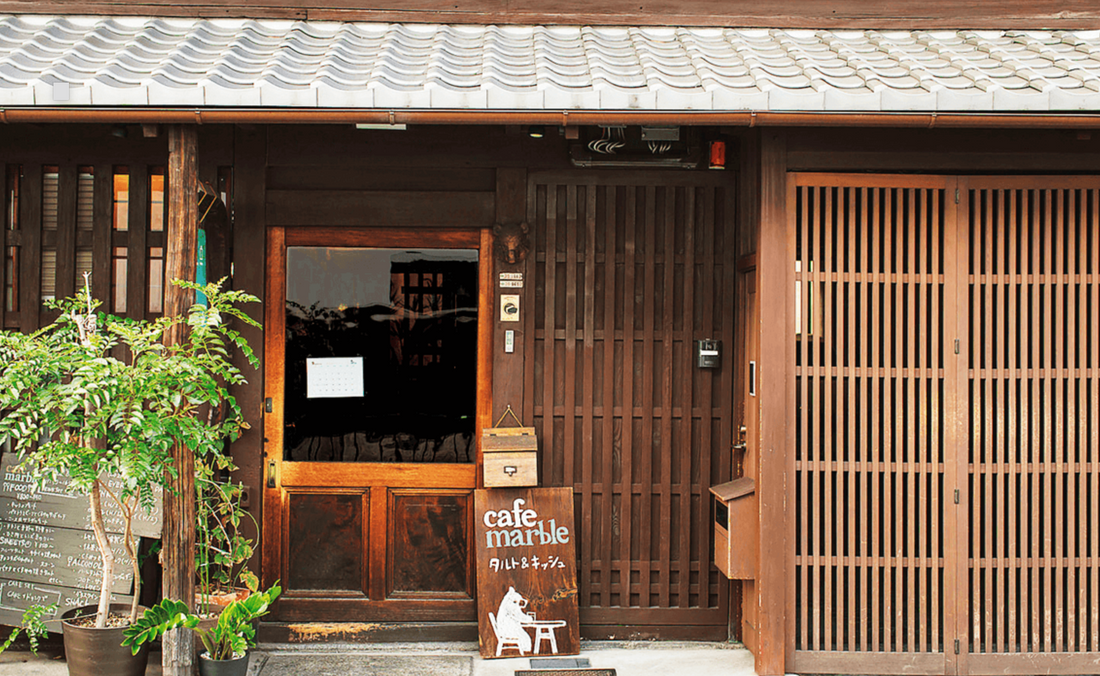
Kyoto’s classic and seasonal food
Kyoto Gourmet Q&A Useful Info!
When speaking of Kyoto, the first thing that comes to mind are Kyoto’s vegetables, which complement dishes of ‘yubaʼ (tofu skin) and ‘hamoʼ (sharp-toothed eel). Find affordable Kyoto vegetarian dishes at Kyoto cuisine and obanzai shops.
The places with the most shops are definitely the downtown areas of Gion and Shijo Kawaramachi. With a view of the Kamogawa River and townhouse restaurants, the area is filled with shops that pride themselves on their location.
Many shops serving Kyoto meals at lunch time start at only ¥3000. Stop in for a dreamy Kyoto meal, and head to a nostalgic townhouse eatery for obanzai homemade cooking in the evening to enjoy a quality Kyoto experience that is light on the wallet.
2 things you CAN’T miss in Kyoto
Kyoto Cuisine
Traditional cuisine that combines the colours of the season with fine craftsmanship
The traditional culinary culture of Kyoto often includes a skillful arrangement of Kyoto vegetables and ‘hamoʼ sharp-toothed eel. Alongside traditional townhouses and ‘ishidatamiʼpathways that exude a real Kyoto feel, recent years have seen many young chefs open their own shops, bringing about a comparatively casual atmosphere.


Townhouses
Hereʼs the real Kyoto! REAL Kyoto
Within Kyoto, there are a number of old townhouses that have been renovated into cafés and restaurants. Experience what itʼs like to live in Kyoto in these locations. In addition to Japanese cuisine, look for Italian, French and other fare that makes these places popular.


Sample these Kyoto-esque seasonal vegetables and dishes!
Spring

From mid-Mar to early may
A signature spring ingredient featured in Kyoto meals and obanzai. Used in tempura, salads, and takenoko rice.

From Mar to may
A type of fuki cultivated in Kyoto and Nara that is soft and mildly bitter. Often used in boiled Kyoto vegetable dishes.
Autumn

From early Sep to late Oct
A traditional ingredient said to date to the Jomon Period. In addition to sweets, itʼs also used in ‘kurigohanʼ cooked into rice.

Year-round
A dish eaten on fine, sunny days in Kyoto. Itʼs also eaten at the Jidai Matsuri in Oct, and the 3 major festivals of Kyoto.

Year-round
Harvested yearround, this green is found in-season in Nov. Popularly used in ‘teppaiʼ with a vinegared miso sauce.
Summer

From Jun to Jul
Hamo are hardy fish found in Kyoto City, which has no ocean front. Eaten lightly boiled and in other bowldishes.

From May to Sep
These beautifully rounded eggplants are firm and meaty like fruit. Used in ‘miso-dengakuʼ, skewed and roasted tofu, with sweet miso sauce.

From Jul to mid-Aug
A large gourd variety of squash. Not often sold in regular markets, they are offloaded to high-scale restaurants.
Winter

From Nov to Feb
The largest turnip in Japan, it is used in winter ‘kyo tsukemonoʼ and ‘senmaitsukeʼ pickles. Very sweet, it is served in soups and stews.

Year-round
With Kyotoʼs well-rooted yudofu culture, this can be enjoyed year round, though it is especially good during the cold winter.

From early Nov to late Jan
Also known as ‘kyo ninjinʼ and characterised by its red colour. Used in New Yearʼs ‘osechiʼ dishes and rice cakes, this is a must for winter Kyoto dishes.
Copyright (C) 2017 JTB Publishing
Information provider: JTB Publishing Inc.
Rurubu DATA
 Book Your Appointment for Consultation
Book Your Appointment for Consultation jtbtravelsaloon.sg@jtbap.com
jtbtravelsaloon.sg@jtbap.com Find us at our new location starting 27th January 2025
Find us at our new location starting 27th January 2025